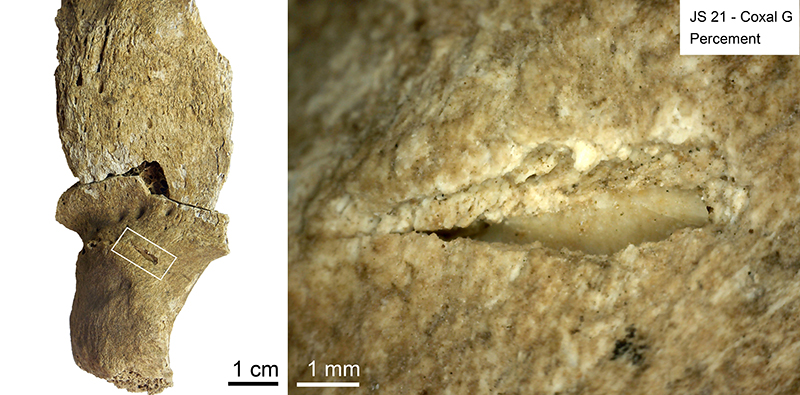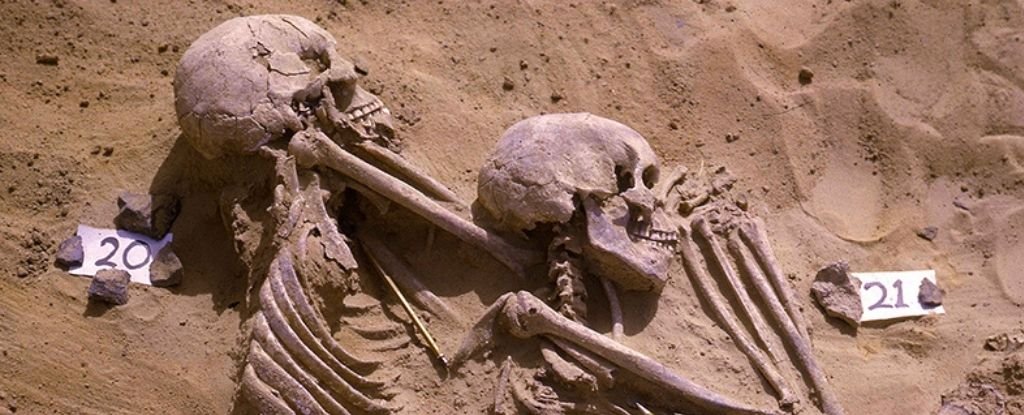Products You May Like
One of the oldest known war cemeteries, discovered in the Nile River Valley, did not necessarily originate from a single epic battle like we once thought.
According to a full reanalysis of this ancient burial site, known as Jebel Sahaba, the humans buried here were probably subject to a series of violent skirmishes rather than one single, tragic onslaught. If so, the researchers suggest a coveted spot in a landscape ravaged by climate change could be the cause.
Reexamining the bones of 61 individuals from the site, researchers have found over a hundred new signs of injury, many of which were not fatal.
A quarter of the skeletons were found with both healed and unhealed wounds, which suggests this group of hunter-gatherers experienced brutal episodes of violence more than once in their lives.
Most of the trauma appears to have been caused by projectile weapons, like arrows or spears, which means the attacks likely came from outside the group and not from within.
Because men, women and children were all affected and buried in similar ways, the authors think the violence was caused by skirmishes, raids, or ambushes.
“We dismiss the hypothesis that Jebel Sahaba reflects a single warfare event, with the new data supporting sporadic and recurrent episodes of inter-personal violence,” the study authors write, “probably triggered by major climatic and environmental changes.”
 A projectile buried in the bone of a left hip found at Jebel Sahaba. (Isabelle Crevecoeur/Marie-Hélène Dias-Meirinho)
A projectile buried in the bone of a left hip found at Jebel Sahaba. (Isabelle Crevecoeur/Marie-Hélène Dias-Meirinho)
The Jebel Sahaba cemetery is dated between 13,400 and 18,600 ago, and is considered evidence for one of the world’s oldest examples of organized violence.
When the mass burial site was first discovered in the 1960s, archaeologists thought it reflected a single brutal war, but a team of anthropologists, prehistorians and geochemists from the French National Centre for Scientific Research and the University of Toulouse – Jean Jaurès now refute that idea.
The frequency of healed wounds at the site instead suggests a life filled with violence, and the timing coincides with the end of the last Ice Age. This extreme climate change transformed the eastern Sahara desert into a cold and hyper arid region, with only a few places hospitable to humans.
The Nile River Valley was one such refuge, with easy access to water, fish, and lush vegetation. At this time, however, the river was prone to wild fluctuations in water level, which meant there wasn’t much land on which to live.
Soon, these few ideal spots became crowded with hunter-gatherers and competition for resources began to heat up. Stuck together in this one area of the world, different groups of humans likely began turning on each other in a series of battles.
“Territorial and environmental pressures triggered by climate changes are most probably responsible for these frequent conflicts between what appears to be culturally distinct Nile Valley semi-sedentary hunter-fisher-gatherers groups,” the authors conclude.
The research supports growing evidence that climate change is a leading driver of human conflict, both now and in the past.
Drought and violence are commonly linked in human history, as different societies fight for the most fertile land. With the world entering a climate crisis like never before, some experts think we are headed for even greater conflict in the future.
Others think the relationship between climate change and human violence is more complicated than that. In fact, there may come a point when resources are so scarce, the cost of violence becomes too high.
Finding out what happened during the last ice age could allow us greater insight into how human behavior changes with the climate. Sites like Jebel Sahaba could therefore give us a glimpse at what is to come.
The study was published in Scientific Reports.
